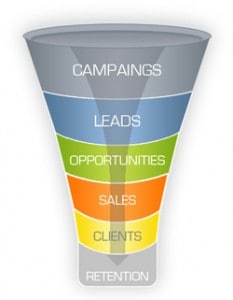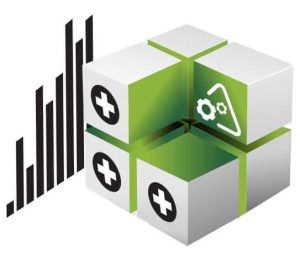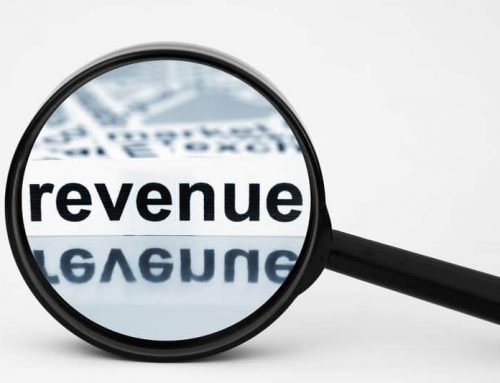 If your profitability is not where you want it, then only 2 things can be causing it – either you don’t have enough revenue and/or your expenses are too high! Sorry to make it so simple, but it is that simple! Too frequently entrepreneurs overcomplicate the situation and avoid the real reason for profitability problems.
If your profitability is not where you want it, then only 2 things can be causing it – either you don’t have enough revenue and/or your expenses are too high! Sorry to make it so simple, but it is that simple! Too frequently entrepreneurs overcomplicate the situation and avoid the real reason for profitability problems.
The problem is which is it and how do you figure out if your problem is revenue or expense related, or both? First, you need to assess how well you are using you assets and resources. There are a number of good tools to help you accomplish this. I recommend something quick and simple to pinpoint key problems like the Revenue Engine Performance Checkup. Once you know where the problem(s) lie(s), then you can apply one of the handful of strategies you need to apply to fix them.
Revenue Problems that Impact Profitability
There are only 4 major root-cause chokepoints that can restrict throughput in your revenue engine which cause profitability problems. They are:
- Production Capacity
- Pricing
- Sales Capacity
- Lead Generation
Any profitability problem you experience is a symptom of one of these 4 areas. So, fix the root-cause and the symptoms disappears; cash flow increases; and profitability increases as a result.
Fixing Profitability via Production Capacity
 Why is production capacity critical? Because it dictates how much you can sell without creating other problems. If you don’t know your maximum capacity, then I recommend you read the post titled Knowing Your Operational Capacity: Avoid Blowing Your Revenue Engine.
Why is production capacity critical? Because it dictates how much you can sell without creating other problems. If you don’t know your maximum capacity, then I recommend you read the post titled Knowing Your Operational Capacity: Avoid Blowing Your Revenue Engine.
If you have available capacity, then you need to develop a sales plan to sell it. Here is another good blog post on how to sell your excess capacity.
Using Your Pricing to Fix Profit Problems
 You have a pricing problem if you don’t have excess capacity, but you still are not profitable. Think about it. If you don’t have anything to sell how do you make more money by selling more?
You have a pricing problem if you don’t have excess capacity, but you still are not profitable. Think about it. If you don’t have anything to sell how do you make more money by selling more?
If your Revenue Engine Performance Checkup has told you there is a pricing problem, read the blog post Avoiding Price Problems That Can Kill Your Business. This will show you how to address fixing this potential root-cause to your profitability problem.
Sales Capacity
 If you have production capacity and good profitability built into your pricing, you’ve passed the first 2 tests. Now, test if you have a sales or marketing issue. First, test to determine how many sales you need to hit your revenue goal. Next, do you have enough sales resources to get there ? If not, why not? Is it because your sales team is not big enough or is it because they are inefficient? If this is the case, then you have to increase your sales capacity. You do that by developing a sales plan, tools, then hiring and training the right people to help you achieve your revenue goal.
If you have production capacity and good profitability built into your pricing, you’ve passed the first 2 tests. Now, test if you have a sales or marketing issue. First, test to determine how many sales you need to hit your revenue goal. Next, do you have enough sales resources to get there ? If not, why not? Is it because your sales team is not big enough or is it because they are inefficient? If this is the case, then you have to increase your sales capacity. You do that by developing a sales plan, tools, then hiring and training the right people to help you achieve your revenue goal.
Lead Generation
If your sales team is spending too much time finding opportunities to sell, then you don’t have a sales problem – you have a marketing problem. Small business owners frequently make this mistake which you can read more in the post title Sales Slump? Do You Have the Right Resources Assigned?
This symptom points directly to marketing not generating enough leads which results from one of 3 things:
- You’re not spending enough time or money to reach your target market.
- You’re sending the wrong message to your target market.
- Or, you’re talking to the wrong target market all together.
If you’re not sure which situation might apply to you, then I recommend determining your marketing effectiveness and marketing efficiency. These are revenue engine metrics that you should be monitoring weekly. Contact BGS for a look at the full version of the Revenue Engine Performance Report to get a better idea of the marketing metrics you should be monitoring. BGS can assist with these calculations and is happy to assist you.
Cutting Expenses to Fix Profitability
 Solving the expense side of the profitability equation is easy, which is why most small business owners and entrepreneurs start here. But, the problem is if you do this first without understanding the revenue side of the equation you run the risk of cutting the wrong expense and making your profitability problem even worse. The post “Are Your Sales Down Because of Poor Decision Made Months Ago?” gives a good example of this situation
Solving the expense side of the profitability equation is easy, which is why most small business owners and entrepreneurs start here. But, the problem is if you do this first without understanding the revenue side of the equation you run the risk of cutting the wrong expense and making your profitability problem even worse. The post “Are Your Sales Down Because of Poor Decision Made Months Ago?” gives a good example of this situation
I recommend addressing expense problems by first assessing where you are overall like I showed you earlier.
- Use something like Revenue Engine Performance Checkup to assess your current operation
- Review your results just like I showed you in the previous sections.
- Then make your expense cuts based on your root-cause revenue issues.
For example if you have too much production capacity based on your sales and marketing team’s capability then you should cut your operational expenses. If you have too much sales capacity (too many sales reps) for the number of leads you can afford to produce, cut sales staff. If your sales team can’t handle all the leads that are coming in, then cut back on marketing.
Where Do You Go From Here?
 Trying to apply a systematic process like this may feel a little overwhelming at this point. Use the BGS Revenue Engine Performance Checkup as a simpler first step. This tool helps you assess which operational metrics you current monitor and which ones you need to figure out and begin monitoring to improve your operational efficiency resulting in increased profit! Just Click the button below to find out how to get $100 off your BGS Revenue Engine Performance Checkup TODAY!
Trying to apply a systematic process like this may feel a little overwhelming at this point. Use the BGS Revenue Engine Performance Checkup as a simpler first step. This tool helps you assess which operational metrics you current monitor and which ones you need to figure out and begin monitoring to improve your operational efficiency resulting in increased profit! Just Click the button below to find out how to get $100 off your BGS Revenue Engine Performance Checkup TODAY!






[…] the post “2 Things Can Kill Your Profit” I show how your operational capacity can impact your revenue, but let’s face it “realized” […]
[…] the post “2 Things Can Kill Your Profit” I show how your operational capacity can impact your revenue, but let’s face it “realized” […]
[…] you only do what’s presented here if your current sales are profitable. Poor profitability and limited capacity ( less than 20% remaining) indicates a pricing or spending problem. Look […]
[…] all costs more money, money you don’t currently have because of your poor profitability. If you can’t deliver on these orders, you’ll create a customer service problem, which can […]